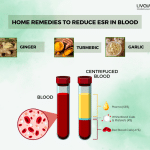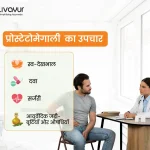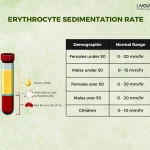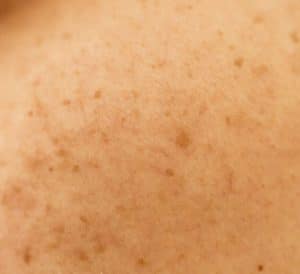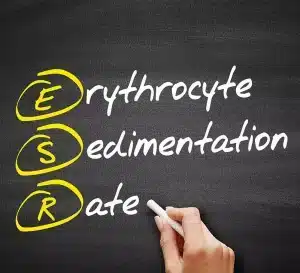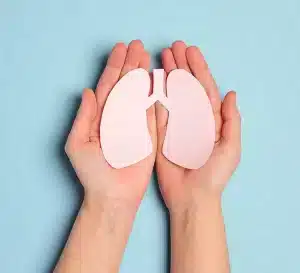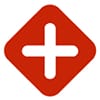
When it comes to heart-related illnesses, or Hridrogas medical terminology can sometimes be confusing. Two terms that are often used interchangeably but actually refer to different conditions are “cardiac arrest” and “heart attack.” Understanding the distinctions between these two conditions is crucial, as they have different causes, symptoms, and treatments. In this article, we’ll delve into the major differences between cardiac arrest and heart attack, shedding light on what sets them apart.
Cardiac arrest and heart attack are both serious cardiovascular events that can have life-threatening consequences if not promptly addressed. However, they occur due to distinct physiological mechanisms and affect the body in different ways. It’s important to differentiate between the two in order to provide the appropriate medical care.
What is Cardiac Arrest?
Cardiac arrest occurs when the heart suddenly stops beating. In this condition, the heart’s electrical signals become chaotic causing an irregular heartbeat or Arrhythmia or cease altogether, leading to an abrupt halt in blood circulation. This means that oxygen-rich blood is no longer being pumped to vital organs, including the brain. Within a matter of minutes, an individual can lose consciousness, stop breathing, and experience irreversible damage to vital organs. [1] [2] [3]
Causes of Cardiac Arrest
There are several potential causes of cardiac arrest, including:
- Ventricular Fibrillation
This is a condition where the heart’s lower chambers, known as ventricles, quiver rather than contract effectively. This chaotic rhythm prevents the heart from pumping blood effectively. [4]
- Ventricular Tachycardia
For patients with this condition, the ventricles beat too rapidly and don’t allow proper blood flow. [4]
- Asystole
Also referred to as “flatlining,” asystole is a condition where the heart has no electrical activity, resulting in a complete lack of heartbeat. [4]
- Electrolyte Imbalances
Disturbances in the body’s electrolyte levels (such as potassium, sodium, and calcium) can disrupt the heart’s electrical signals. [4]
- Drug Overdose
Certain drugs, especially those that affect the heart’s electrical activity, can trigger cardiac arrest. [4]
Symptoms of Cardiac Arrest
Cardiac arrest often occurs suddenly and without warning. Common symptoms include:
- Sudden loss of responsiveness [5] [6]
- Absence of normal breathing [5] [6]
- No pulse [5] [6]
- Unconsciousness [5] [6]
- Lightheadedness or dizziness before losing consciousness (in some cases) [5] [6]
Treatment of Cardiac Arrest
Immediate action is crucial when someone experiences cardiac arrest. The primary treatment is cardiopulmonary resuscitation (CPR), which involves chest compressions and rescue breaths to manually circulate blood and oxygen throughout the body. In addition, the use of an automated external defibrillator (AED) can help restore a normal heart rhythm by delivering an electric shock to the heart. [1] [7]
What is a Heart Attack?
A heart attack, also known as a myocardial infarction, occurs when blood flow to a portion of the heart muscle is obstructed. This obstruction is often caused by a blood clot that forms in a coronary artery, blocking the supply of oxygen-rich blood to a specific area of the heart. If the blood flow is not restored promptly, the affected heart muscle tissue can be damaged or destroyed. [8] [9] [10]
Causes of Heart Attack
The main cause of a heart attack is the development of coronary artery disease. This condition involves the accumulation of plaque—a combination of fat, cholesterol, and other substances—on the inner walls of the coronary arteries. Over time, this plaque can rupture and form a blood clot, leading to the obstruction of blood flow. [8] [11]
Symptoms of Heart Attack
The symptoms of a heart attack can vary, but common signs include:
- Chest Pain: A sensation of pressure, tightness, or pain in the chest that may radiate to the arm, jaw, neck, back, or stomach. [8] [12]
- Shortness of Breath: Difficulty breathing or feeling breathless even with minimal physical activity. [8] [12]
- Sweating: Sudden and excessive sweating, often accompanied by a feeling of impending doom. [8] [12]
- Nausea and Vomiting: Feeling nauseous or vomiting may occur during a heart attack. [8] [12]
- Lightheadedness: Feeling dizzy or lightheaded can be a symptom, especially in women. [8] [12]
Treatment of Heart Attack

A heart attack is a medical emergency that requires immediate attention. Timely treatment can help prevent or minimise damage to the heart muscle. Treatment options include:
- Thrombolytic Therapy: Medications known as thrombolytics can be administered to dissolve the blood clot and restore blood flow. [13]
- Angioplasty and Stenting: This procedure involves inserting a small tube (catheter) with a balloon at the tip into the blocked artery. The balloon is inflated to open the artery, and a stent may be placed to keep the artery open. [13]
- Coronary Artery Bypass Surgery: In severe cases, bypass surgery may be necessary to create alternative routes for blood flow to the heart muscle. [13]
- Heart transplant: Removes a diseased heart and replaces it with a donated healthy human heart. [13]
- Minimally invasive heart surgery: An alternative to standard bypass surgery. [13]
Key Differences Between Cardiac Arrest and Heart Attack
To summarise the major differences between cardiac arrest and heart attack:
- Cause: Cardiac arrest is caused by a disruption in the heart’s electrical signals, while a heart attack is caused by a blocked coronary artery. [4] [8]
- Blood Circulation: In cardiac arrest, blood circulation ceases abruptly, whereas, in a heart attack, blood flow to a specific portion of the heart muscle is obstructed. [1] [8]
- Consciousness: Cardiac arrest leads to unconsciousness within moments, while a heart attack may or may not result in loss of consciousness. [1] [8]
- Symptoms: The symptoms of cardiac arrest involve sudden loss of responsiveness, no pulse, and absence of breathing. Heart attack symptoms often include chest pain, shortness of breath, sweating, and nausea.[5] [8]
- Treatment: Cardiac arrest requires immediate CPR and defibrillation, while a heart attack involves medications, procedures like angioplasty, and surgical interventions.[7] [13]
Ayurvedic View on Cardiovascular Health
The Ayurvedic standpoint on heart health emphasizes the significance of maintaining equilibrium among the three doshas: Vata, Pitta, and Kapha, as imbalances within them can lead to various health concerns, particularly those related to the heart.
Imbalance in Vata
Vata is linked with movement and circulation within the body. When Vata becomes excessive, it can disrupt the heart’s natural rhythm, potentially causing irregularities. To restore Vata balance, Ayurveda recommends adopting practices that induce relaxation, warmth, and grounding. These encompass gentle exercises, consumption of warm and nourishing foods, and utilization of calming herbal remedies. [14] [15]
Imbalance in Pitta
Pitta is associated with metabolic processes and transformation. An excessive accumulation of Pitta can trigger inflammation and heightened heat within the body, potentially impacting the cardiovascular system. Counteracting this excess involves embracing cooling strategies, such as the consumption of cooling foods like cucumber and mint, as well as engaging in soothing activities. [14] [15]
Imbalance in Kapha
Kapha governs stability and structural aspects of the body. An excess buildup of Kapha can lead to congestion and sluggish circulation, potentially affecting heart health. To address Kapha imbalance, Ayurvedic recommendations include regular participation in physical activities, consumption of light and easily digestible foods, and incorporation of warming spices. [14] [15]
Ayurveda can guide individuals in preventing Hridrogas like Cardiac Arrest and Heart Attack and also help in the recovery process post-treatment. However, it is not the sole replacement for the conventional treatment procedures and any individual experiencing the symptoms of such conditions should immediately seek medical attention for the same.
FAQs
1. Can a heart attack lead to cardiac arrest?
Yes, a severe heart attack can potentially lead to cardiac arrest if it causes a dangerous heart rhythm disturbance or extensive damage to the heart muscle.
2. How can I reduce my risk of cardiac arrest and heart attack?
Maintaining a healthy lifestyle by eating a balanced diet, exercising regularly, avoiding smoking, managing stress, and getting regular check-ups can help reduce the risk of both cardiac arrest and heart attack.
3. What should I do if I witness someone experiencing cardiac arrest?
Call emergency services immediately and start CPR. If available, use an automated external defibrillator (AED) to administer a shock to the heart if advised by the device.
4. Can young and healthy individuals experience cardiac arrest or heart attack?
Yes, while these events are more common in older individuals with risk factors like high blood pressure and cholesterol, they can occur in young and seemingly healthy individuals due to factors like genetic predisposition or certain medical conditions.
5. Are there gender differences in symptoms of cardiac arrest and heart attack?
Yes, women may experience symptoms of a heart attack differently from men. Women are more likely to have atypical symptoms like shortness of breath, nausea, and back pain. However, both genders can experience chest pain as a symptom.
6. Should I take someone who might be having a heart attack to the hospital myself?
It is recommended to call emergency services for professional medical assistance. Emergency medical personnel can provide appropriate care and treatment on the way to the hospital.
7. Can stress or anxiety trigger cardiac arrest or heart attack?
While stress and anxiety can contribute to heart-related issues, they are not direct causes of cardiac arrest or heart attack. However, chronic stress can impact heart health over time.
Conclusion
Cardiac arrest and heart attack are two critical medical events that require rapid response and specialised care. Knowing the differences between these conditions is essential for both healthcare professionals and the general public. By understanding the unique causes, symptoms, and treatments of cardiac arrest and heart attack, individuals can be better prepared to recognize the signs of these emergencies and seek prompt medical attention.
Disclaimer: The information provided in this article is for educational purposes only and is not a substitute for professional medical advice. Always consult a healthcare provider before making any significant changes to your lifestyle or treatment plan.
References:
- Cardiac Arrest – StatPearls – NCBI Bookshelf (nih.gov)
- Cardiac-Arrest (heart.org)
- Cardiac Arrest: An Important Public Health Issue (cdc.gov)
- Cardiac Arrest – Causes and Risk Factors | NHLBI, NIH
- Cardiac Arrest – Symptoms | NHLBI, NIH
- Heart Attack, Stroke and Cardiac Arrest Symptoms | American Heart Association
- The management of cardiac arrest(alsg.org)
- Heart Attack Symptoms, Risk, and Recovery | cdc.gov
- Heart Attack – What Is a Heart Attack? | NHLBI, NIH
- Heart attack – NHS (www.nhs.uk)
- Causes of heart attack – NHS (www.nhs.uk)
- Heart Attack – Symptoms | NHLBI, NIH
- Treatment of a Heart Attack | American Heart Association
- Relationship between Three Ayurvedic Doshas and Heart Rate Variability Frequency Bands: A Pilot Study | Semantic Scholar
- Hegde Gajanana & Bhat Priya: Concept of Doshas and Dushyas in Different Cardiac Disorders


